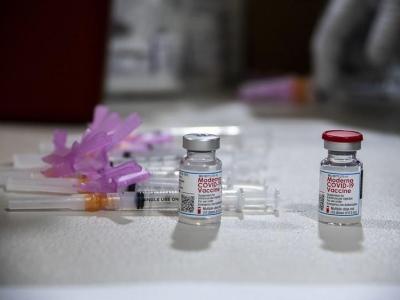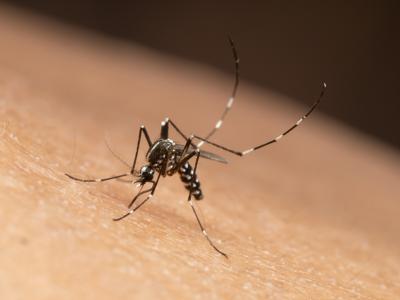May 5, 2010 (CIDRAP News) Two newly released studies conducted at the University of Utah confirm what many physicians suspected: The news of the start of the H1N1 pandemic in late April 2009 caused panicked parents to bring children to emergency departments in drovesbut what was driving those ER visits was not flu symptoms, but rather the fear of flu.
The evidence, which confirms many physicians' anecdotal impressions from the start of the pandemic last year, raises questions about how outbreak news should best be transmitted to educate the public without provoking panic, the authors said.
In the two studies, presented May 1 and 4 at the Pediatric Academic Societies' annual meeting in Vancouver, B.C., Dr. William M. McDonnell and colleagues report that both pediatric and general emergency departments in Utah saw sharp increases in the number of child patients brought to ERs immediately after news of the first child death in the United States from novel H1N1. That was weeks before the first wave of that flu reached the state.
The three researchers drew on the centralized database of Intermountain Health Care, which operates 18 emergency departments in Utah and where McDonnell practices, to examine patterns of visits in a "fear week," a "flu week," and a control week that occurred before either the news of flu or flu itself had arrived in the area.
They found that, in the pediatric emergency rooms, fear of flu ramped up visits more than 16% between the "control week" that began Apr 20, 2009, and the "fear week" that began Apr 27. Flu actually arrived in Utah, in one of the earliest outbreaks in the country, in late May; in the "flu week" that began Jun 1, visits were 22% higher than those in the control week. Paradoxically, though, actual admissions to the hospital decreased in both weeks compared to the week before the pandemic began.
In the general emergency departments, which see both child and adult patients, visits were actually higher during the fear week (7% over the control week) than they were during the flu week (6.6% over the control week). In each week, most of the traffic was due to child visits, not adult visits.
McDonnell, who is an assistant professor of pediatrics in the University of Utah's division of pediatric emergency medicine and also an adjunct professor of law at the university's S.J. Quinney College of Law, was working clinically during both the fear and flu weeks.
"I remember a lot of people just frankly asking me, 'Is my child going to die?' even when the children weren't sick," he said in an interview. "Some of them were kids with the usual colds; there is never a time in the pediatric population when there isn't some sort o f viral illness going around. But there was no H1N1 flu in our area, and we had seen almost no flu the preceding two months."
The Utah experience was recapitulated in emergency departments in other states that were similarly overwhelmed by anxious parents and cranky children, long before any local cases of flu.
"Long before we had flu activity, we had record volumes in our emergency department, most of whom were the worried well or the mildly ill," said Dr. Brian Currie, vice president and medical director for research at Montefiore Medical Center in the Bronx in New York City. "We're talking six to eight times our usually busy ER volume. We have the largest emergency room capacity in New York City and probably the 5th largest in the United Statesso if we were getting overwhelmed, you can imagine how smaller hospitals and institutions were feeling."
The crunch continued once flu arrived, even when children were mildly ill and did not need ER attention, said Dr. Stuart Bradin, assistant professor of pediatrics and emergency medicine at the University of Michigan Health System in Ann Arbor.
"The numbers almost doubled from what we typically see during the day," he said. "Many of the kids we saw had mild symptoms, but they were very much in the mix as far as keeping the emergency department very busy."
The physicians agreed that the volume was driven by parental concern whipped up by nonstop media and Internet coverage of the new flu.
"I think there was a lot of fear created; everyone got the message that this could be very bad, so see a doctor," Bradin said. "Any time you have pediatric deaths, that puts a lot of fear into the public, but in this case midlevel health care providers were quite fearful as well."
That crunch, Currie said, overwhelmed even elaborate, well-practiced plans that Montefiore had built over years to anticipate pandemic surgesbecause the plans dealt largely with anticipating stress on hospital admissions, rather than the walk-in environment of the emergency room.
The experience has left the hospital puzzling out how to counter public misunderstanding of outbreaks, he said, wistfully wondering whether public health officials could have been allowed some sort of "equal time" to counter media impressions of virulent illness and a high body count.
Because so much of the volume in Utah was child patients, McDonnell suggested that one lesson from the future could be to devote extra effort to defusing health fears among parents.
More broadly, he said, "We certainly feel that our study showed public fears about H1N1 produced more ER visits even before the disease arrived, and that media messages about public health issues affect people's behavior."
In an ideal next time, he added, "I'd like to see the media and the medical community working together to make sure we inform the public as accurately as possible when risks existand also when they do not."
McDonnell WM, Nelson DS, Schunk JE. Should we fear flu fear itself? Lessons from the spring 2009 H1N1 influenza outbreak. Presented at Pediatric Academic Societies' 2010 annual meeting, Vancouver, B.C., May 1, 2010 [Abstract]
McDonnell WM, Nelson DS, Schunk JE. Flu, fear of flu, and pediatric emergency department utilization. Presented at Pediatric Academic Societies' 2010 annual meeting, Vancouver, B.C., May 4, 2010 [Abstract]
See also:
May 8, 2009, CIDRAP News story "'Worried well' overload gives taste of pandemic scenario"




















